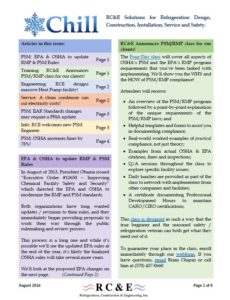OSHA Resumes Regular Enforcement in Texas and Louisiana.
DALLAS, TX – On Oct. 10, 2017, the U.S. Department of Labor’s Occupational Safety and Health Administration (OSHA), which had ceased most programmed enforcement actions following Hurricane Harvey, resumed normal enforcement throughout Texas and Louisiana.
Following Hurricane Harvey, OSHA provided compliance assistance and outreach to employers and workers in a number of counties and parishes in Texas and Louisiana. This action enabled OSHA’s staff to provide faster and more flexible responses to hazards facing workers involved in the cleanup and recovery operations. Thousands of crews and individual workers received job safety and health technical assistance. OSHA retained the right to inspection cases involving fatalities, catastrophic accidents, employee complaints, and employers who repeatedly exposed employees to serious hazards during cleanup and recovery operations.
“We are now able to resume regular enforcement operations in most of the impacted areas,” said OSHA’s Region VI Administrator Kelly Knighton. “For those areas most heavily impacted by Hurricane Harvey, we will continue to provide employers and workers with compliance assistance and outreach. We will be monitoring these areas closely, and as they transition from cleanup and recovery to normal operations so will OSHA’s enforcement.”
Category: General Interest (Page 3 of 3)
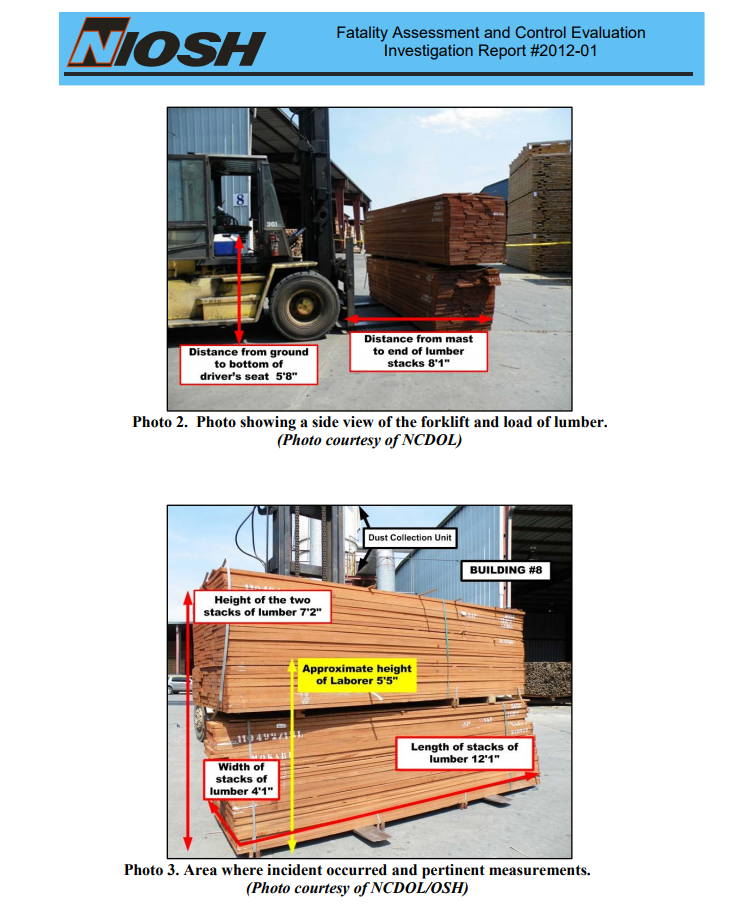
“A 58-year-old Hispanic lumberyard worker died on March 30, 2012, from crushing injuries received when a forklift driven by a coworker struck him. The lumberyard laborer was walking from his work area to the employee lunchroom. At the same time, and in the same area, a coworker was operating a forklift that was loaded with lumber. The forklift operator’s field of vision was limited because he was transporting the lumber “load-forward” and the load partially obscured his view. He did not see the laborer but stopped when he felt the forklift roll over something. He exited the cab and found the laborer unresponsive, lying near the left side of the forklift. The laborer was pronounced dead at the scene. The medical examiner identified head and thoracic injuries as the cause of death.” —NIOSH FACE
This unfortunate incident is not Process Safety related, but MANY NH3 processes are located in Cold Storages and Food plants that have MANY forklifts. If YOU work in such a place, please share this information with your co-workers and Occupational Safety team. Hopefully, sharing it can serve as a reminder that you shouldn’t drive forklifts with an obstructed view.
For those of you that wanted the slides from the “How to prepare for an Inspection” presentation that was given by me at the 2017 DFW Regional RETA conference, the link is below:
2017 DFW Regional Conference PPT – Chapin 031317
Depending on your area you may get anywhere from five days up to six weeks notice for a scheduled inspection from the EPA. You aren’t going to create a compliant, living PSM/RMP program in that time frame but there are many things you can do to prepare the program you already have. Assuming you have a level 3 program in conjunction with a PSM program, here are three things you absolutely should do if you get notice of an inspection:
Synopsis from a 2012 post on another site:
What should you do if you get a notice of an EPA Risk Management Program inspection?
1) Know your material.
- The RMP Level 3 checklist that most EPA inspectors use is freely available online. Go through it and make sure you have these items covered in writing and that you know where to find them quickly.
- Check your documentation for accuracy: Every document you use to answer the questions in the RMP Level 3 checklist should be checked for accuracy. Are you doing the things the documents require in the way you say they will be done?
- Check for open recommendations. Whether they’ve been generated through Employee Participation, Incident Investigations, Process Hazard Analysis, Compliance Audits or any other source, make 100% sure that you have addressed every one of these recommendations. You don’t need to have every one of them closed, but you need a plan of action and a schedule for those actions in writing.
2) Prepare the staff – including yourself.
- Make sure everyone is aware that an inspection is going to happen.
- You don’t want to be tripping over contractors so you may wish to schedule their work at times that don’t coincide with your inspection.
- Remind your staff to “GO TO THE DOCUMENTS” in response to any PSM/RMP question.
Q: “How do you drain this oil pot?”
A: “With this written procedure.”
Q: “How much ammonia is in the system?”
A: “This inventory calculation sheet has the information you are asking for.”
- Handle this as a professional learning opportunity and you’ll do much better. Rather than having a surly demeanor and saying “What do you want?” to an inspector, why not something more like “We put a lot of effort into our PSM/RMP program to protect our employees and the environment. We’re really looking forward to this opportunity to show you all the hard work we’ve been doing and perhaps find some ways we can further improve it in light of your experience.” Now you’ve complimented the inspector and expressed your company’s desire to meet the goals of the program – nobody loses there.
- Relax: Remember they are auditing a program – not the people who implement it. It’s important that you take the inspection seriously but it’s not the inquisition. Don’t relax too much: I know of several inspections that went downhill rapidly because the staff were treating the inspection as a joke.
- Put yourself in their shoes for a second. Inspectors are generally good people trying to do a good thing – treat them as professionals. There are appropriate venues to vent your feelings on the federal or state government – the inspection is not one of them. Inspectors are used to being treated awfully so why not be the exception and treat them as a welcome guest?
- On the flip side – STAND YOUR GROUND. Support your program and your compliance efforts with RAGAGEP (Recognized and Generally Accepted Good Engineering Practices) so the inspector is left to argue with the CCPS or the IIAR rather than you personally. Often inspectors will want to see something a certain way. When you are having an issue meeting their demands, ask them exactly what portion of the law they are referring to. PSM/RMP is a performance oriented standard – they picked the destination but your company gets to pick the path you take to that destination.
3) Prepare the facility
- Part of the inspection will include a site tour. This is no different than a visit from your mother in law – you will want to put your best foot forward.
- Plan out your route so the inspector gets to see everything they need to see while showing the facility in the best light.
- Do some dusting, painting, re-labeling and tagging as needed. A little bit of housekeeping goes a long way in establishing good will.
- LOOK at your system. A dented drain pan will draw questions about “struck-by hazards”, a fresh weld and unpainted pipe will draw questions about Management of Change, frost on insulation will draw questions about Corrosion Under Insulation and Non-Destructive Testing, etc. Be prepared for these questions and have ready answers.
The steps above WILL prepare you for an EPA inspection and they WILL improve your results. What they can’t do is cover up a program that has been neglected for years, but if you are reading this then that’s probably not your situation. Almost any program that has not been completely neglected can be improved and polished enough to pass most EPA inspections with the help of a great compliance consultant.
If you find yourself in need of some advice, some pre-audit assistance or a compliance audit / gap analysis, you can always call on your favorite resource for some assistance before the inspection. I would love to hear from you and help you prepare. You don’t have to be in this alone!
In refrigeration we use PSI (pounds per square inch) as a measure of pressure, but we often show it on different scales. PSIA (pounds per square inch absolute) is a scale that shows the pressure relative to a pure vacuum. PSIG (pounds per square inch gauge) is a scale that shows the pressure relative to the ambient atmospheric pressure at sea level.
The difference between PSIA and PSIG is a little less than 15PSI due to the atmospheric pressure. That doesn’t seem like a lot of pressure, does it?
Here’s a video showing a cannon that uses that atmospheric pressure to destroy a watermelon.
The incident we are discussing today is from a recent ruling in the United States Court of Appeals, Seventh Circuit where they recently denied a petition for review in the case of “DANA CONTAINER, INC. v. SECRETARY OF LABOR.” While this particular citation concerns “Permit Required Confined Spaces,” the lessons are applicable to all OSHA rules.
The case arose after toxic fumes in a large container knocked out a man who was working inside it. From the ruling:
In the cold early morning hours of January 28, 2009, one of Dana’s supervisors, Bobby Fox, was on the third shift along with former employee Cesar Jaimes. Fox was working on a trailer and encountered a problem with a clogged valve just as he was about to begin the mechanical cleaning process. Disregarding the safety rules, he entered the tank prior to cleaning it, without attaching himself to the retrieval device or following the entry permit procedures. After a short while, Jaimes looked inside, saw Fox unconscious in a pool of chemical sludge, and called the Summit Fire Department. The firefighters hoisted him out, rinsed off the chemical residue, and transported him to the hospital. Fox was diagnosed with “Syncope and Collapse, Toxic Effect of Unspecified Gas, Fume, or Vapor” (i.e., fainting).
While the employee was rescued by the local fire department, his employer, Dana Container, was cited for Willful violations by OSHA and has been fighting those citations – through an Administrative Law Judge (ALJ), then the OSHA Review Commission and now through the Circuit Court.
Here is a proven three-step plan to get Willful OSHA citations
1) Have a supervisor break the rules: The employer tried to prove that the unsafe actions were “unpreventable employee misconduct” such that the employer was unaware of the issue. OSHA is required to prove that the employer knew about the problem.
In this case, the supervisor’s knowledge can be imputed to the employer… This path for imputing knowledge is common in employment law. When an employee is acting within the scope of her employment, her knowledge is typically imputed to the employer… Conduct is “within the scope of employment when [it is] ‘actuated, at least in part, by a purpose to serve the [employer],’ even if it is forbidden by the employer.” Here, Fox knew that he was violating the rules when he entered the dirty tank in order to kick loose a stuck valve so that he could then drain the tank. His act was in furtherance of Dana’s tank cleaning business.
2) Have a track-record of failing to follow your own safety programs: OSHA was able to show that the employer should have been able to foresee the supervisor misconduct because they knew (or should have known) there were long-standing issues with their program:
There was evidence showing that nearly all of the tank entry permits at Dana’s Summit facility contained errors or omissions. Some indicated that the entries had exceeded the maximum duration of 20 minutes by over an hour. Others had other flaws: for example, they lacked the requisite air monitoring results; they failed to show the duration for which the permit was valid; they indicated that employees had not reviewed material safety data sheets (or had no information about review); and they failed to name either the entrant or the entry attendant. Whether these errors and omissions occurred because the employees were violating entry procedures or if they reflected only recording problems, there is no evidence that the Facility Manager followed up on the deficiencies. The Commission was therefore justified in concluding that there was a failure to enforce Dana’s safety program… The Commission was entitled to find that the uncorrected permit violations exhibited a pattern of disregard for the rules at Dana. Even in the face of a robust written program, lax disregard of the rules can send a message to employees that a company does not make safety a priority. In such an environment, conduct such as Fox’s is reasonably foreseeable… Dana’s effort to persuade us that the Commission erred by rejecting the “unpreventable employee misconduct” defense also falls short. To use the defense an employer must show that it took steps to discover violations of its safety rules and that it effectively enforced the rules when violations were discovered.
3) Have a shaky track record on enforcement of your own policies: Dana cited a OSHA Review Commission case holding that an employer can demonstrate that the willful conduct of its supervisory personnel should not be imputed to the employer if the employer can demonstrate a good faith effort to comply with the standard.
The Commission…found that although, on the one hand, Dana had work rules that were communicated to its employees and had submitted evidence of three instances of disciplinary action, on the other hand the facility manager had never disciplined an employee for improperly completing permits or for the violations apparent on the face of the permits. The Commission concluded that Dana had therefore failed to take action when violations of safety rules were plain, as would have been required in a good faith effort.
Working backwards, you can avoid willful citations by:
- Establishing clear, compliant policies on OSHA rules.
- Requiring Supervisors to be responsible for the implementation of our policies, the enforcement of those policies and the documentation of our adherence to those policies.
- Requiring the Safety Department to periodically audit the compliance to our policies of field supervisors and personnel.
P.S. Bonus: It’s never a good idea to get in the news:
“A local TV news crew broadcast the rescue that morning, and OSHA inspector Jami Bachus happened to see it before heading to work. She volunteered to inspect Dana’s facility and did so, arriving at the Summit station within three hours of the accident.”
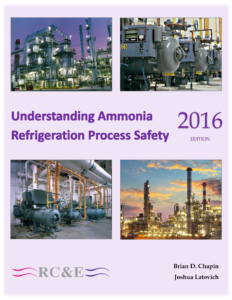
Last month we wrapped up our first RC&E Customer PSM class in Fort Worth, Texas. The participants spent four days learning about PSM and sharing ideas, challenges and solutions. Due to the mix of skill levels (First-timers to Experienced Practitioners) and Organizational Position (Operators, Safety Professionals and Managers) the class was a lot of fun for all involved.
Here’s what some of the participants had to say about the class:
“With quite a lot of pre-existing PSM knowledge, I still came away with lessons learned.”
“…this class did a great job in explaining how the PSM system works.”
“Very thorough… I won’t feel like I am fumbling in the dark anymore.”
“Engaging presentation of complex material. A valuable class”
“Very in-depth. Informative. Answered questions before I got to ask them!”
This class is exclusively for RC&E Customers because it’s designed around the specific PSM program that RC&E has written for them. If you are interested in attending the next class in June, you can get more information from the Class Flyer or Register Now to save your spot!
When I see people writing “Have a Full-Face APR (Air Purifying Respirator) nearby, within arm’s reach” in their Line/Equipment Opening (aka Line Break) procedures, my blood-pressure shoots through the roof. Yes, I know I am a rather excitable guy by nature, but there is a legitimate reason for my anger here.
This incident narrative is why:
It is believed the oil drain valve was initially clogged as the employee opened it a full three turns before any ammonia came out. When liquid exited the valve and struck the employee he fell face first on concrete in hallway. “Convulsions” were observed by other employees and the operator was unable to self-rescue due to lung spasms. The other employees had no access to PPE and could not assist the victim.
Would a Full-Face APR within “arm’s reach” have been useful to that employee AFTER he was struck in the face with liquid ammonia?
NO. IT WOULD NOT.
With NO protection, that operator was essentially doomed the second the NH3 left the pipe and struck him.
PPE stands for Personal Protective Equipment, not Potentially Protective Equipment.
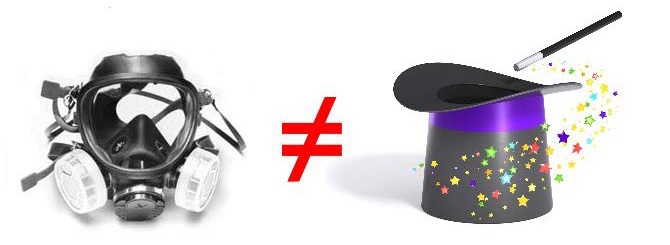 PPE isn’t some sort of magic relic that provides protection while you are within a certain radius of its location. It works when – and ONLY when – you use it properly. This same foolish thinking that allows people to require APR’s “nearby” could be applied to seat-belts with about the same effectiveness: “Well, no he wasn’t wearing the seat-belt during the accident. Funny thing: the darned seat-belt was right there next to him and he still went out the window when the car hit the tree.”
PPE isn’t some sort of magic relic that provides protection while you are within a certain radius of its location. It works when – and ONLY when – you use it properly. This same foolish thinking that allows people to require APR’s “nearby” could be applied to seat-belts with about the same effectiveness: “Well, no he wasn’t wearing the seat-belt during the accident. Funny thing: the darned seat-belt was right there next to him and he still went out the window when the car hit the tree.”
Now, imagine instead that the operator in that incident narrative was wearing a Full-Face APR. While Full-Face APR’s aren’t designed for liquid exposure, would he have survived if he were wearing one? Almost certainly, YES. Certainly his odds would have improved astronomically. He may well have suffered severe burns, but it is very likely that the Full-Face APR would have afforded him enough protection so that he would have been able to evacuate himself from the area and seek a safety shower to minimize the damage to his skin.
Please, THINK about your policies and REQUIRE that Full-Face APR’s are worn during ALL Line & Equipment openings.
102417 Update: Here’s a picture that perfectly illustrates the uselessness of having PPE “nearby”…
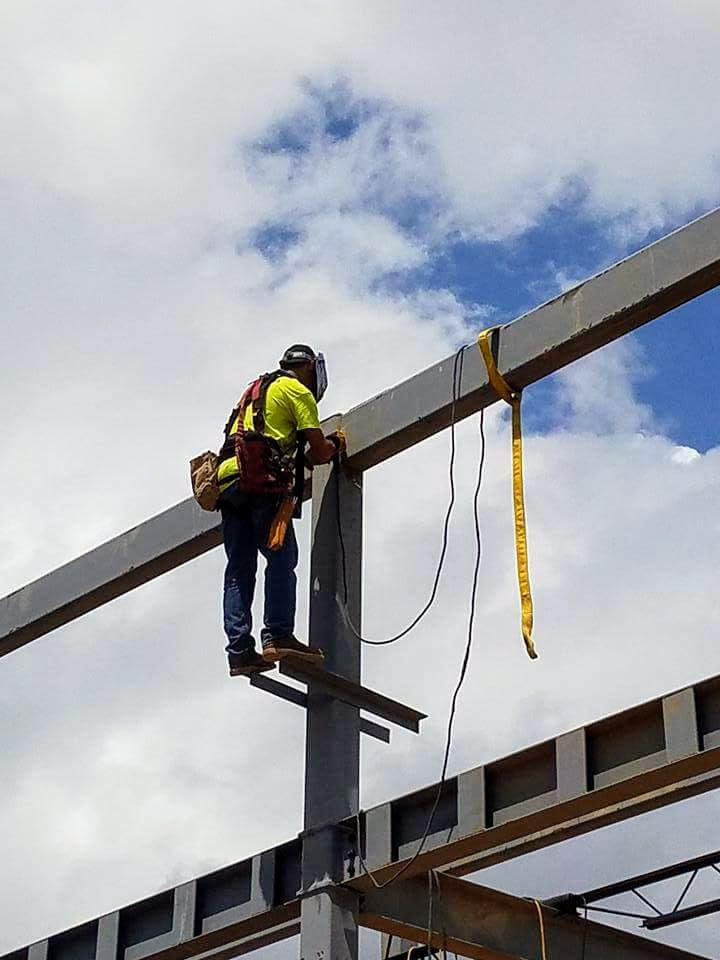
Our PSM Engineer, Josh Latovich, and Compliance Services Manager, Brian Chapin, were in Las Vegas last week for RETA’s Annual Conference. Below are Brian’s thoughts on the event:

It was great to meet so many friends and colleagues in Las Vegas last week for RETA’s annual conference. While all business is about personal relationships, most people recognize that the Ammonia Refrigeration industry is a uniquely tight-knit group. We’ve always been strong supporters of RETA because their focus is on the Refrigerating Engineers and Technicians – the actual ground troops that do the work!
The comradery of the process operators in our industry is second to none and it’s always good to get the opportunity to assemble in one place for a few days to discuss common issues. A common theme this year in our conversations was one that has been very prevalent for the last few years, but only seems to be getting worse: the operator shortage.
For nearly a decade now there just aren’t enough skilled operators to go around and that has only highlighted the need for quality training for the new people we’re drafting into the field. There have been third-party solutions for overall refrigeration training for years and these programs have value, but they must serve to augment quality in-house training, not replace it.
What a quality in-house training program looks like is a very complicated subject and one we may write about at some point, but what I’d like to talk about today is something related to that topic: the power imbalance between the new and the seasoned operator.
While driving to Arkansas for a client visit earlier this week I was listening to a book on tape: Malcolm Gladwell’s “Outliers: The Story of Success.” In a chapter on Airplane crashes he spoke of a very interesting statistic: The plain is more likely to crash when the Captain is flying than when the First Officer is flying. Isn’t that odd? Wouldn’t you expect the more seasoned, more experienced Captain to be safer than the comparatively less seasoned and experienced First Officer?
He also offered what many psychologists believe is the reason for this: The Captain is very likely to point out a mistake made by the First Officer because they are in an elevated position compared to them. It is much more difficult – psychologically speaking – for the junior officer to challenge the Captain! With so many experienced operators training new ones, couldn’t we also be affected by this sort of power imbalance?
So, here are a couple thoughts for those of you in the field to help us all avoid the problems caused by power imbalance:
If you are the more seasoned, experienced technician:
- Are you making yourself approachable?
- Are you actively soliciting input from your colleagues on your plan of action?
- Are you rewarding questions about your plan of action or punishing them?
- Are you considering questions about your plan as teaching moments rather than challenges to your “authority?”
If you are the less seasoned, experience technician:
- Are you speaking up if you have concerns or questions about the plan of action?
- Are you insisting that you are heard rather than just making sure you have said your piece?
- Are you posing your concerns or questions as opportunities for your colleagues to train you?
It’s the last bullet of each of those that I want to focus on briefly. Whether you are the questioner or the person answering the question, you need to look at these moments of confusion as teaching moments. Saying “That’s stupid” or “I wouldn’t do it that way,” is perceived as a challenge and isn’t likely to get a constructive response. Saying “Help me understand why you are doing it this way,” “Is there a reason not to do it this other way,” or “Let me explain why I’m doing it this way” starts a dialogue between people that can bring you both together.
By asking yourself the above questions, the experienced technician will soon come to understand that “teaching” someone often helps them clarify their thoughts and makes them understand their own actions better. The inexperienced technician will find that training isn’t just something that happens in a classroom – their day is full of learning opportunities.
Remember, we’re all in this together.
RC&E has just released their first quarterly newsletter.
Click this link to see the August 2016 Newsletter in PDF format.
